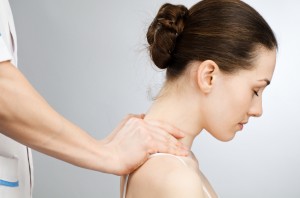

Competitive swimmer Hilary
“Rolfing [for an injured shoulder]
I’ve long been curious about Rolfing, named for Ida Rolf, a New York biochemist who studied alternative methods of body work and healing beginning in the 1920s. I had heard it hurt but that the results were phenomenal.
Rolf developed a theory that the body’s aches and pains arose from basic imbalances in posture and alignment, which were reinforced over time by gravity and learned responses among muscles and fascia — the sheath-like connective tissue that surrounds and binds muscles. Rolfing developed as a way to “restructure” muscles and fascia.
I felt like overworked muscles on my dominant right side were pulling across my back and yanking everything out of alignment.
Jan Sultan, a Redondo Beach-based Rolfer who was trained (and Rolfed) by Rolf and who has been practicing for 45 years, said that if a patient is orthopedically compromised with a rotator cuff injury, it lowers the probability that Rolfing will help. But it can help if the shoulder has a sprain, a muscle tear or imbalance to the joint.
My Rolfer, Maria Cristina Jimenez, discussed my history, symptoms and what I hoped to achieve. She had me walk, move and raise my arms over my head. Then she had me lie down on the table.
Her hands moved over my body, realigning and trying to find the pain. She was like a masseuse with extra-sensory powers. She found an upper rib (on the side of my injured shoulder) that had popped out, and with some pressure got it back in. Instantly my whole back and shoulder area felt better. The session ended with her gently cradling my sacrum and rocking me back and forth. There are many nerve endings there, she said. It felt weird, but good.
I walked home feeling clearer, taller and spaced out. After a lifetime of swimming, running, hiking, working, carrying children and sheer gravity, I realized that this is the crux of it: My body needs serious realigning — just like my car.
(I never got an official diagnosis because I chose not to get an MRI. And so far I’m not choosing surgery. I have just started swimming again after the race, so far without pain. I walk and practice yoga.)”
She details the rest of her treatment in the full article. Read the rest of the article [here]
